Highbrow, Lowbrow, Unibrow
There appear to be two forms or poles of culture, that of the snob and that of the philistine. On the north pole we appear to find highbrow ‘art’ and ‘literature’—the chaotic, the experimental, the highly abstract, the atonal, the minimalist, the subjectively insubstantial. Highbrow culture is primarily formal, in that only the material of the art—the canvas, the style, the text—has meaning. Formalist art rejects utility and it rejects sentiment, both of which reach past form, the former into practical activity, the latter into the emotional urges that drive such activity. Formalist, highbrow art has no need for utility, as those who enjoy it do not really do things in the world, nor for sentiment (unless in the form of ironic kitsch), which appeals to emotions that snobs do not possess and have no use for. Formalist art tends towards abstraction, towards that which takes intellectual effort to enjoy, which is why formalist art is elitist, because art that is difficult (including art produced before the listener, reader or viewer was born) naturally appeals to those who have the time and intellectual resources to appreciate it; the rich and the privileged.
On the south pole of the philistine we find lowbrow culture—the ordered, the familiar, the sentimental, the tonal, the exciting, the objectively substantial. Lowbrow art is primarily functional. Texts which communicate something to ordinary people without specialised academic education, or images which are of something in the world, or material objects that can be used and enjoyed in the home or in public spaces, are all functional.1 Where snobbish art is elitist, and unable to express practical facts, philistine art is populist, and unable to express sublime ideas. Lowbrow art is easy, requiring no great effort or time, and is invariably sentimental, in that it offers the audience, in lieu of meaning, intense identification with an emotional representation of meaning through coarse stimulation of hormones; adrenaline—wow, speed! wow, conflict!—oestrogen—ahh, togetherness, ahh, cute—testosterone—phwoar, tits, phwoar, arse—and dopamine—mmm, food, mmm, the past.2 Lowbrow stories, images and songs which appeal to instincts to raise a family, bond with the tribe, fuck over sexual competitors or scoff your face, all justify and compensate for the punishing demands and material sterility of modern, mass, working life. This is why they are popular.
The highbrow-lowbrow divide in cultural production is driven, at least partly, by political antagonisms. Taste, as Pierre Bourdieu discovered, is a symbolic weapon in class war,3 a means by which elites can reproduce their nice clean culture and justify domination of the tasteless filth beneath them. But as the distinction between classes has been, at least partly, evaporated by the laser-beam of technocratic capital, so too has the cultural preferences of owners, managers and workers. We now find ourselves in an acultural, postmodern, unipolar or unibrow world, in which the distinction between elite and plebeian taste has been, at least to some extent, collapsed, revealing them to be two aspects of the same civilised illusion. There is no more distinction because there is no more culture.
Modern mass culture, first of all, does not sell art, as such, but membership of an identity, which means that such art must be taken very seriously by selves invested in an identity. Not long ago, those who created and enjoyed superhero films, tacky comics and video games, for example, would be quite open about the fact that they are just a bit of cheap fun. Now they must be defended as ‘art’, for much the same reason that Clara Schumann, Sappho and Frida Kahlo (or African ‘literature’4 or gay ‘philosophy’) must be held up as paragons of cultural magnificence and any criticism of their actual, as opposed to ideological, worth, rejected as the ravings of a cultural Nazi. Nerds, herbivores5 and porn-addicts have rights too you know!
The drive to validate one’s identity through culture is one with the postmodern dissolution of border and distinction that is both symptom and cause of the collapse of civilisation. As male and female, public and private, self and world are all dissolving into a featureless singularity, so highbrow and lowbrow are becoming a single formal-functional nothing. Fine art, for example, is no longer elitist in the sense of being solitary, intellectual contemplation. Since the nineteen eighties, when hyper-capitalism began to fuse with techno-socialist institutions, the focus of contemporary art has been on the entertaining, the titillating and the showily spectacular. One goes to an art gallery or to a museum to be distracted and stupefied. Artists now create in order to meet the institutional demands of galleries which are now little more than grotesque amusement parks.




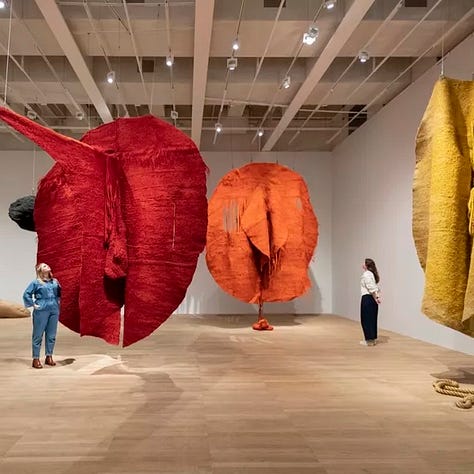
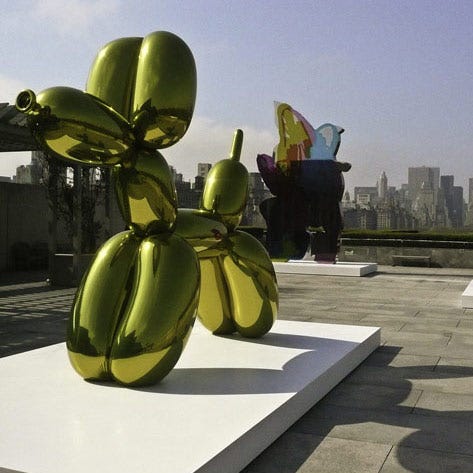
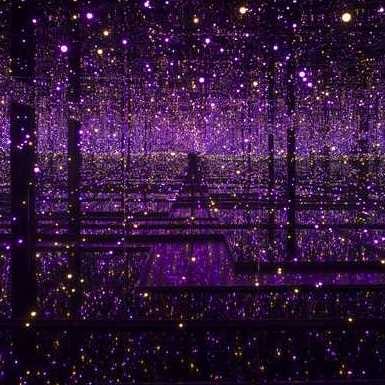
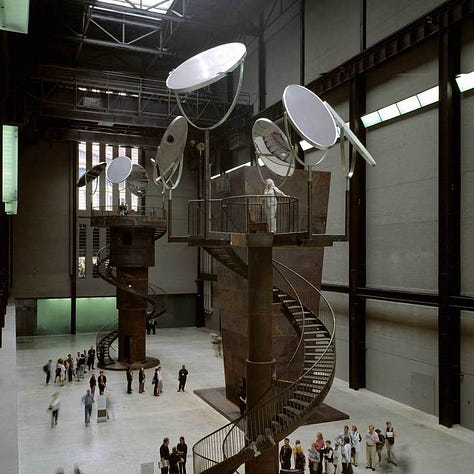
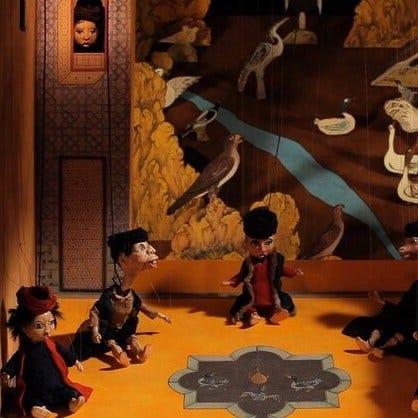
One shouldn’t, however, be deceived into supposing that Pokemon at the Van Gogh gallery, or Pride and Prejudice and Zombies or the various ‘immersive experiences’ of postmodern ‘edutainment’6 that one finds in the museums of late capitalism are forming celestial high-brow and sensual low-brow into a new heaven on earth. For the cultural apocalypse we are living through is neither popular nor profound. As the anxiety of monogendered ciphers is just different in degree, and not in kind, to that of the pseudogendered men and women they have supplanted, and as the boredom of an alienated daily life that forces distant hearts into your face while casting those of the people sitting next to you to the other side of the planet is essentially no different to the lost world of alienated privacy and lonely publicity we lived in before the internet, so the featureless vapidity of the postmodernist uni-brow is really no different to the pretentious highbrow and crude lowbrow it appears to have replaced. It’s all meaningless.
What this means is that, just below the unibrow surface, cultural life is still either elitist, and without real meaning, or populist, and without ideal meaning. Just as the institutional collapse, which has compressed the borders of classrooms, courts and surgeries into an online singularity has not really eradicated the difference between a teacher, a lawyer and a doctor, so the aesthetic collapse has not, finally, done away with the differing tastes of rich and poor. There is still Rothko for the cognoscenti, and ‘Ed Sheeran: A Visual Journey’ for the masses, still opera after Michelin meals and boxsets for Burger Kings and Queens, still Monte Carlo in Cartier and Centre Parcs in Superdry. Bourdieu’s symbolic class antagonisms, and antagonists, still exist, but they have been concealed, smeared, blurred, blended.
(An Aside: Cultural Theft)
The question of cultural refinement is further complicated by cultural theft, or forced possession of common culture. This is not cultural appropriation, which is both natural and necessary (education, growth and all forms of cultural development are impossible without appropriation) rather an abstract correlate of elite enclosure of common land, a kind of mass plagiarism that the refined classes engage in at the expense of the living culture beneath them. As peasants poaching, or gathering firewood, or relying on each other for their subsistence — in short sharing common resources — had to be criminalised for the capitalist system to function, so copyright infringement had to become a crime, so that culture could be possessed by upper-class elites with the money to buy it. At the same time, white people doing kung fu, wearing saris or getting a tan for a film part had to be rebranded as unforgivable cultural theft, the ‘cultural appropriation’ of the identitarian,7 so that culture could be managed by middle-class professionals who stand to gain from identity issues.
There are four forces behind cultural theft. The first is that superficial art magically attains highbrow status by virtue of the fact that it justifies rule-by-identity. This is how the sentimental portraits of, say, Élisabeth Louise Vigée Le Brun (a woman), or the cheap journalism and pulp fiction of George Schuyler (a ‘person of colour’) find their way into the Penguin ‘classic’ range or onto the syllabuses of Oxford and Cambridge, and how various classical writers and artists find themselves ‘claimed’ by the gay or trans community as avatars of their ideologies (Emperor Elagabalus? Really a woman. Tchaikovsky? Gay icon. Beethoven? Black.8 ).
The second drive to steal lower-class culture is symbolic. Art that once addressed and incited ordinary people becomes, once time has erased the social conditions that made it accessible and dangerous, a means by which intellectuals with enough time and cultural capital to interpret them can enjoy the appearance of subversive depth, without its troublesome implications. The parables of Jesus, the music of J.S. Bach, the plays of William Shakespeare, the paintings of Van Gogh and the fiction of William Morris were all once either accessible or subversive or both, but now, de-fanged with age, they can safely be enjoyed by the social and cultural elite that frequent churches, art galleries, classical music concerts and the classics section of bookshops.
The third reason that lower-class culture tends, over time, to become a vested interest, is that the owning and management class is, as a class, hollow. It has to ‘borrow’ the genius of the working class for the same reason that it has to ‘borrow’ its labour, because it has none of its own. Styles of speech, dress, music, drama and literature are, like the poor who express them, drained of vitality and their ghoulish images taken on by the establishment. This is how the exuberant genius of the commedia dell’arte ossified into the pale formalism of the professional stage, how ghostly parodies of the inspiration that breathed through the 60s and 70s came to haunt the vast spectacular ‘festivals’ of later (and current) decades, and how the bright inspirations of young artists and comedians so often becomes the institutional-friendly torpor of their later lives.
The final influence on the theft of the lowbrow is institutional. Modernity substitutes free creation with mass-production and abstract management. Because beautiful objects cannot be cheaply mass produced, and because a peculiar Cult of the Original reigns in the West,9 those that still exist must instead be managed in the cultural refrigeration units we call museums and galleries. It is easy to forget that the shrink-wrapped and tagged artefacts stored in the extraordinary warehouses for stolen goods we call ‘museums’ were once ordinary things that were actually used in ordinary places. Now that we can no longer produce beautiful objects for our ordinary lives, those we used to produce take on the status of religious icons; distant objects to worship—via a priestly class of cultural managers—rather than near objects to use.
An Exceedingly Brief History of Taste
We might say, then that highbrow is corrupted art and lowbrow is corrupted craft. Although this is an oversimplification, and although the distinction fades into all kinds of elusive subtleties, art appeals almost entirely to impractical, qualitative intuition and craft to practical, quantitative action. Art sits more on the subjective-side of reality, and craft on the objective, which is why builders find it difficult to get away with making houses with no ceilings10 but artists can confidently exhibit their underwear, why a world run by artificially intelligent machines keeps us comfortable but spiritually dead, and why people in such a world describe hairdressers, fashion designers and bakers as ‘geniuses’.
It wasn’t always so. Once art was an indivisible part of life, genius infused the production of bowls and plates just as naturally as it did that of devotional chants and epic poems. As William Morris (following Marx) noted,11 although humans naturally specialise, the Nature that animates the finest artist also breathed through the roughest carpenter, rooting the paintings of the former in the material world and the chairs of the latter in the land of spirit. Similarly, mighty works of art and literature once had huge popular audiences and vastly popular works sought to express elevated truths; Don Quixote, Othello, Robinson Crusoe, Tom Jones, Sense and Sensibility, Huckleberry Finn and War and Peace were all written for ordinary people, not for ‘the literati’. Even recently, musicians with mass appeal sought to drink from deep wells of creative truth.12
So what happened? When and where did the snob-philistine split occur, and why? A casual glance at the history of art and literature might settle on the modernist era of the 1920s for the point when elitist art, the music of Stravinsky and Schoenberg, for example, or the art of Picasso and Chirico, or the literature of Joyce and Proust,13 divorced itself from the lives of the dehumanized masses, which were simultaneously scorned by avant-garde artists and authors14 and at the same time fetishised by them.15 Ordinary people would no longer read perceptive books or watch realistic films about their own lives16 preferring to escape from those lives into fantastic forms of mass entertainment (comics, movies, pulp fiction, etc.) provided by the system to manage their wayward attentions and to provide them with relief from their meaningless quotidian misery.17 There have been many heroic attempts since then to bridge the highbrow-lowbrow divide, but from the 1920s onwards, the two worlds, of the cheesy and the wanky, had irrecoverably split from each other.
Spend a weekend of listening to mass-appeal music, watching mass-appeal movies and reading mass-appeal novels… and you’re ready for work.
Actually though, the cultural fissure goes back further than early twentieth century modernism, back to the rise of positivist science four centuries earlier, which began to dominate what men and women experienced as reality, pushing religion and the arts into an insubstantial ‘higher’ realm which was good for silent Sunday devotion, good for endless, fussy academic speculation, and good for entertainment, distraction and fun—but which had no bearing on the nitty gritty ‘real world’. Henceforth those who devoted themselves to the serious business of this ‘real world’, to practical affairs and material progress, were the philistines that kept the machine running, while boffins, pen-pushers, mystics and wealthy dropouts with taste simultaneously looked down on their tasteless inferiors and, at the same time, were helplessly dependent on them.
It was at this point that making art, singing, dancing, telling stories and so on became skills that had to be acquired, or that only some special people had a talent for, rather than natural properties of being human, like walking and swimming. Those who had the skills and the ‘talent’, properly nurtured in the proper institutions, could expect to be allowed, through the gallery, the press and concert hall, to present what counted as ‘art’, while ordinary people started to complain that ‘I can’t sing / draw / dance for toffee’ and to worship the new class of ‘genius’ who could. Folk musicians, working-class poets, peasant artists and all manner of gifted craftsmen found themselves excluded and marginalised by the refined and ‘serious’ work of professional ‘geniuses’. Even those few outsiders who miraculously found the time and resources to achieve greatness, such as William Blake, John Clare and Henri Rousseau, would have to wait until they died before they could be recognised.
The 19th century deepened this cultural divide, as the industrial revolution that had reshaped society necessarily created an urban mass and a philistine bourgeoisie that was increasingly preoccupied with material progress and practical concerns, not to mention accessible, artistic pleasures, over the kind of aesthetic-spiritual niceties that great artists are concerned with. Such artists then became ‘ahead of their time’ (which is to say of their time but of no interest to it) and at odds with a public unwilling or unable to engage with their reflection of life as it actually is. This alienation was compounded by artists’ own decadent18 retreat into aesthetic isolation, as they sought to preserve their integrity by distancing themselves from the vulgarity of mass-market and bourgeois tastes. But this isolation came at a cost: their work, while refined and intellectually rigorous, lacked the broader social resonance and moral engagement that had characterised earlier artistic movements. Thus, the 19th century became a battleground between the demands of a rapidly modernising society and the uncompromising vision of its most significant artists, leaving a legacy of cultural fragmentation; the grotesque snobbery and philistinism we see emerge in the modernist period.
But why stop with the rise of professional science and the rise of the philistine bourgeoisie and the industrial mass? The highbrow-lowbrow fissure can also be found at end of the medieval period, when Christians, in their war against paganism, ‘taught men to appraise poetry by a purely aesthetic standard—a standard which enabled them to reject most of the moral and religious teaching of the classical poets as false and ungodly, while accepting the formal elements in their work as instructive and aesthetically delightful.’19 Soon after this, even Christian myths and images were divorced from material life, to become allegories which only the initiated and the learned could decode. This too, like professional biblical interpretation, or exegesis, divided the discerning expert, who understood what symbols and rituals really meant, from the tasteless horde, who now had to rely on expertise—the priestly forerunners to our doctors and teachers—for cultural meaning and social participation. Many of what we might call the ‘culture wars’ of the early modern era were between the laity, newly empowered by mass produced books and vernacular translations, and the clergy, who lost their keys to the cultural kingdom, allowing for a flood of cultural creativity to wash over Europe in the fifteenth, sixteenth and seventeenth centuries.
But even this does not penetrate deeply enough into the cultural fissure that divides highbrow and lowbrow culture. We must go back even further to find the source of the rupture, back to the rise of civilisation itself, with the alienating class and caste-system it engendered, which divided men and women from nature and from human nature, making reality itself a specialist concern, which only the priestly elite could administer to the denatured, decultured mass. Snobbery can be detected in some of the earliest classics of world literature, in the work of both Aristotle and ‘philosopher-king’ Plato for example, for whom rational knowledge was reality itself20 and so those who could not learn—women, slaves and barbarians—were irrational non-people. But we don’t need literature to guess the attitude that powerful princes and priests of Mesopotamia, China and Egypt held towards the peons beneath them.
The first snob appeared with the first slave.
Part 2, ‘From Unibrow to Unibrow’.
Materialists (or in the realm of art and literature, naturalists and realists) cannot tell the difference between meaning and hormones.
Taste is first and foremost distaste, disgust and visceral intolerance of the taste of others.
Pierre Bourdieu, Distinction: A Social Critique of the Judgement of Taste (my emphasis).
Bourdieu being a materialist (and, essentially, a Marxist) is unable to offer anything but a relativist, and therefore limited, understanding of taste, but his analysis is still as important as it has been influential. He also offers insights into the means by which the discourse of apparently ‘neutral’ and ‘objective’ science perpetuates and justifies elite taste.
It goes without saying that I do mean textual literature, not orality, which is not, as is well understood now, an unskilful and not sufficiently serious prototype of civilised literature, but, as all traditional, pre-literate cultures demonstrate, oral art forms surpass written forms in elegance, meaningfulness and depth. See Walter Ong’s classic study, Orality and Literacy.
i.e. hikikomori.
Never of course, the other way round. Asians, for example, can wear three-piece suits, use American slang and learn to play Chopin without it being a racial crime. For white people, no such luck, although white folk are stuck in a double bind, because they can’t identify as white either — that’s racist!
I mention this last example as a particularly bizarre instance of identity theft, but of course nobody with any intelligence takes it seriously.
Peculiar and unnatural, in that nature constantly renews itself. See Byung-Chul Han, Shanzhai: Deconstruction in Chinese for a discussion of the living quality that art once had in the West, and still has in the East.
Difficult, but not impossible!
In his classic polemic, Useful Work versus Useless Toil. ‘The whole life’ of Eric Gill was also, as Herbert Read put it, ‘a protest against the distinction between the artist and the ordinary man.’ True, ‘the ordinary man’ in Gill’s case was a sexual deviant, but that doesn’t seem to have negatively affected his aesthetics.
…the great Italian painters are not only the Cézannes and Picassos of their day: they are also the popular illustrators whose work would now appear in Christmas magazines, the people who show you what some famous story really looked like: and, thirdly, they are the great decorators who can make a rich man’s dining room look as he wants it to look. So… an opera by Mozart is the ancestor both of the modern serious opera and of the revue. The separation of the low-brow from the high-brow in its present sharpness is a comparatively recent thing: and with the loss of the old unified function all curb on the eccentricity of real artists and the vulgarity of mere entertainers has vanished.
C. S. Lewis, Studies in Medieval and Renaissance Literature
Flaubert, Henry James, Proust, Joyce and Virginia Woolf have finished off the novel. Now all will have to be re-invented as from the beginning. Let us consider if there is any living writer whose silence we would consider a literary disaster, who, with three centuries more of art and history to draw from, can sustain a comparison with, for example, Pascal.
Cyril Connolly, The Unquiet Grave.
As one of England’s most famous philistines, John Carey, noted, In The Intellectuals and the Masses, hatred of ordinary people was more or less a badge of membership to the Bloomsbury set.
In their socialistic ideals, and in their emphasis on the depth of artistic truth that radiates through the ‘insignificant’ moments, in the ‘insignificant’ lives, of ‘insignificant’ people (such as Joyce’s Leopold Bloom). This, however, led to precisely the alienation they were endeavouring to circumvent. Avant-garde authors endeavoured to explore the consciousness of a character not through giving what they felt was an impossibly complete account of his or her life, but through dissolving any authorial omniscience that could access this. In the place where character had lived, a kaleidoscope’s nightmare of shifting perspectives took up residence. Modernists authors did not, in other words, turn away from an approach that can never access the truth but towards one; for it is only through myth — incomplete, yes, selective too, and misleading, and easily perverted by ideologues — that the totality of consciousness can be represented and not (fascinating and mystically enlivening as ten pages about sunlight hitting a lemon, refracted through twenty nameless voices, might be) through laser-like moments divorced from any kind of totality which can give them meaning. This explains, notwithstanding the wonderful vitality of perception that threads through modernist novels, the lassitude, bitterness, haziness and nastiness they are so often weighed down with.
Leading to people like Mike Leigh and Ken Loach making films about working class folk who never go to the see them.
During the nineteenth century vulgar literature to a large extent replaced the mythological constructions of religion… This withdrawal into fantasy was immensely re-enforced from 1910 on, by the motion-picture, which came into existence just when the pressure from the machine was beginning to bear down more and more inexorably. Public day-dreams of wealth, magnificence, adventure, irregularity and spontaneous action—identification with the criminal defying the forces of order—identification with the courtesan practising openly the allurements of sex—these scarcely adolescent fantasies, created and projected with the aid of the machine, made the machine-ritual tolerable to the vast urban or urbanized populations of the world. But these dreams were no longer private, and what is more they were no longer spontaneous and free: they were promptly capltalIzed on a vast scale as the “amusement business”, and established as a vested interest. To create a more liberal life that might do without such anodynes was to threaten the safety of investments built on the certainty of continued dullness, boredom and defeat.
Lewis Mumford, Technics and Civilisation
A good deal of the modernist project was not in fact concerned with widening the gap between art and life, but closing it. The politicised art of Dada, surrealism, and the post-1917 Russian avant-garde was a form of rebellion, looking forward to radical social change. It was felt, after the ‘art-for-art’s-sake’ movement of in the latter half of the nineteenth century, that culture needed to be reunited with reality, not further sundered from it. The decadent thirst for refined aesthetic sensations had led its practitioners — Walter Pater, Oscar Wilde, Charles Baudelaire, J.K. Huysmans, Guy de Maupassant and company — to madness, despair, ignominy and rabid forms of Catholicism.
Werner Jeager, Paideia: The Ideals of Greek Culture.
And for whom ethics was divorced from aesthetics in a manner totally foreign to Homer. Ibid.



